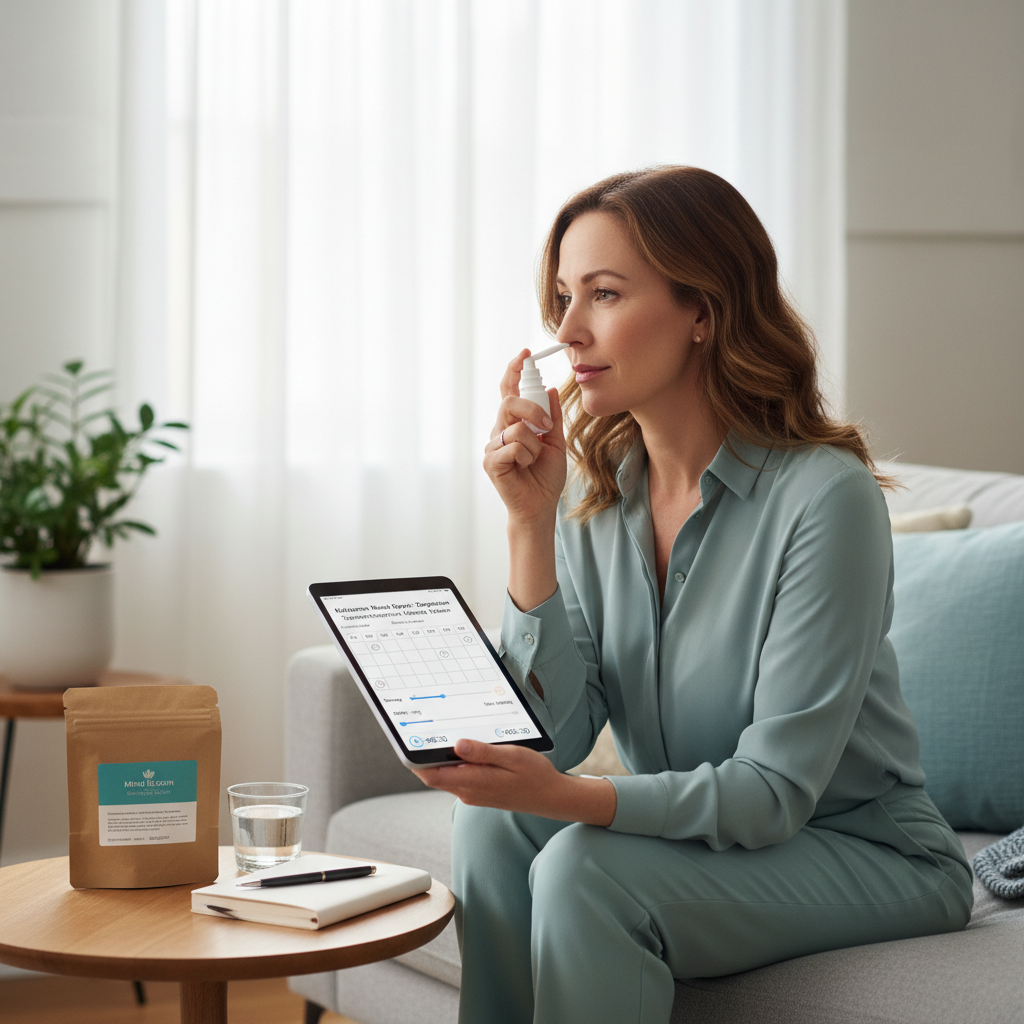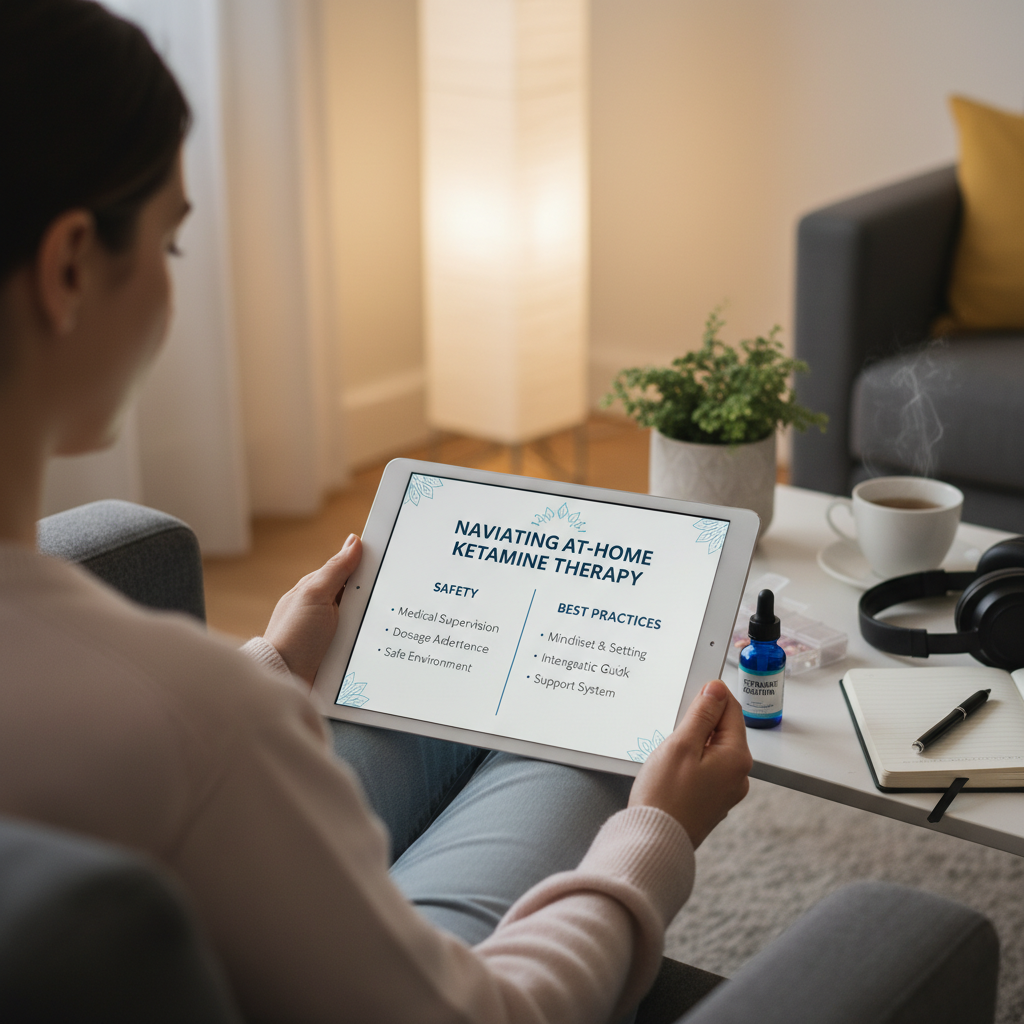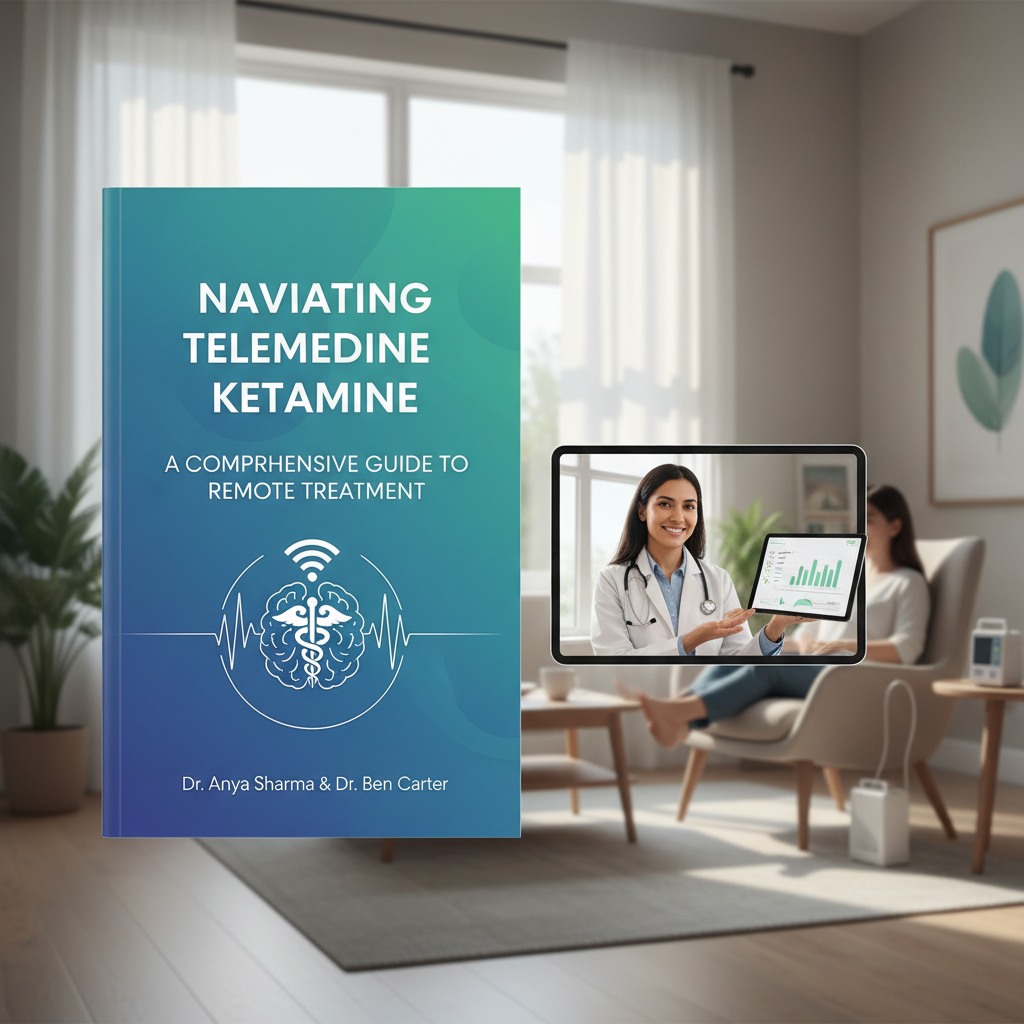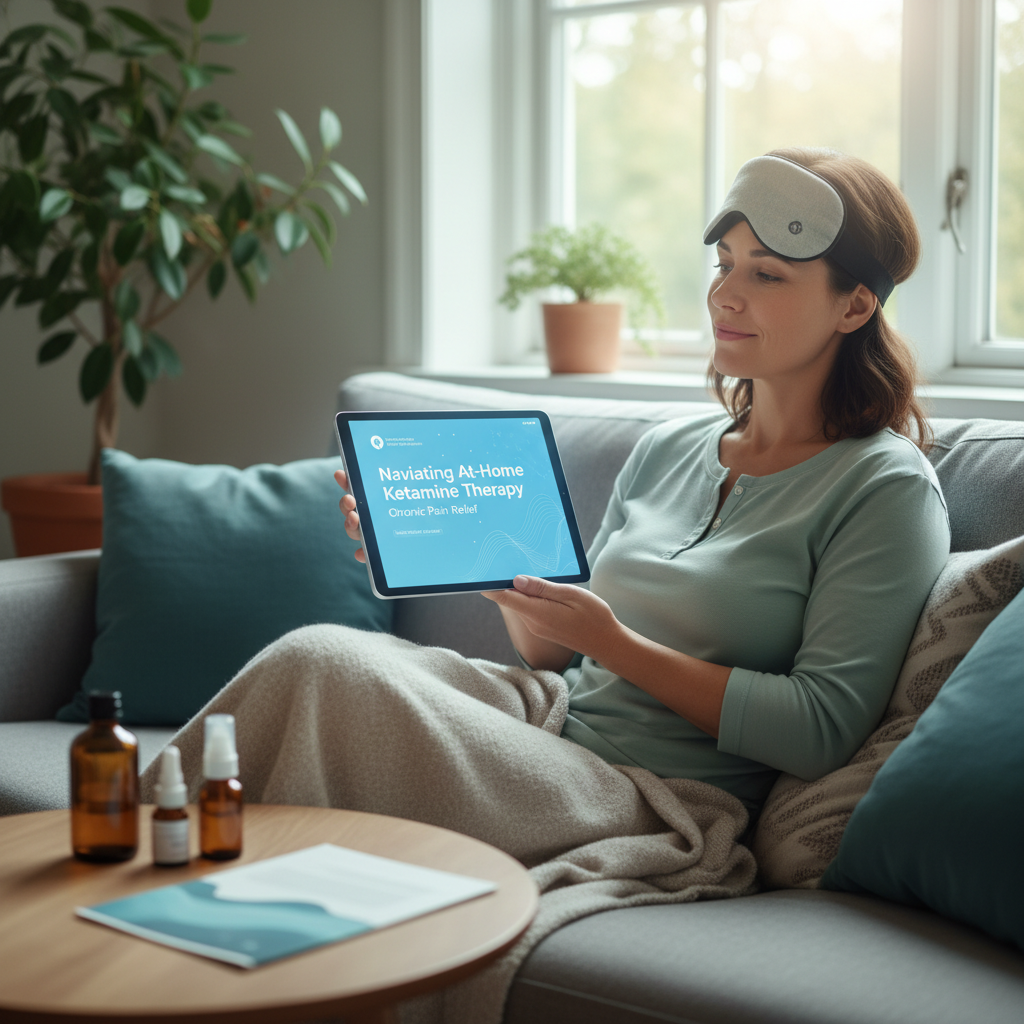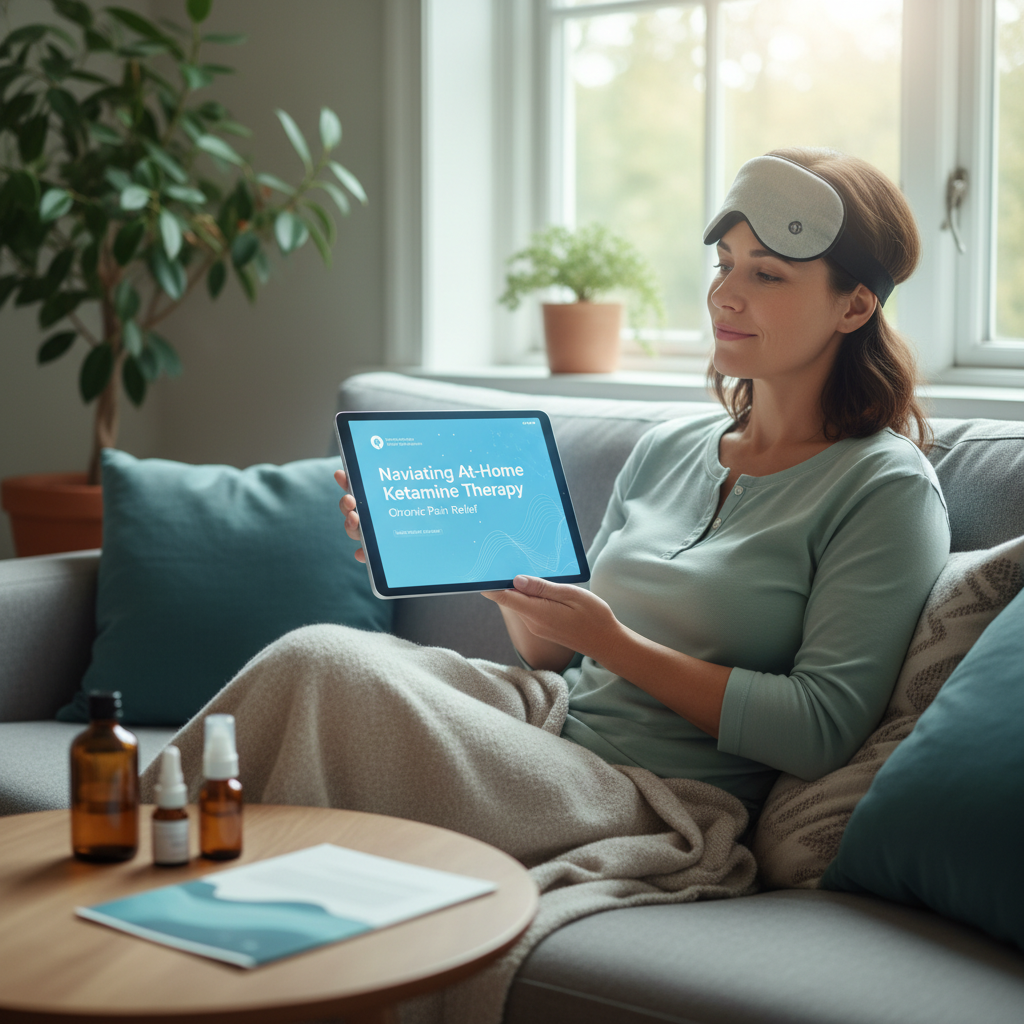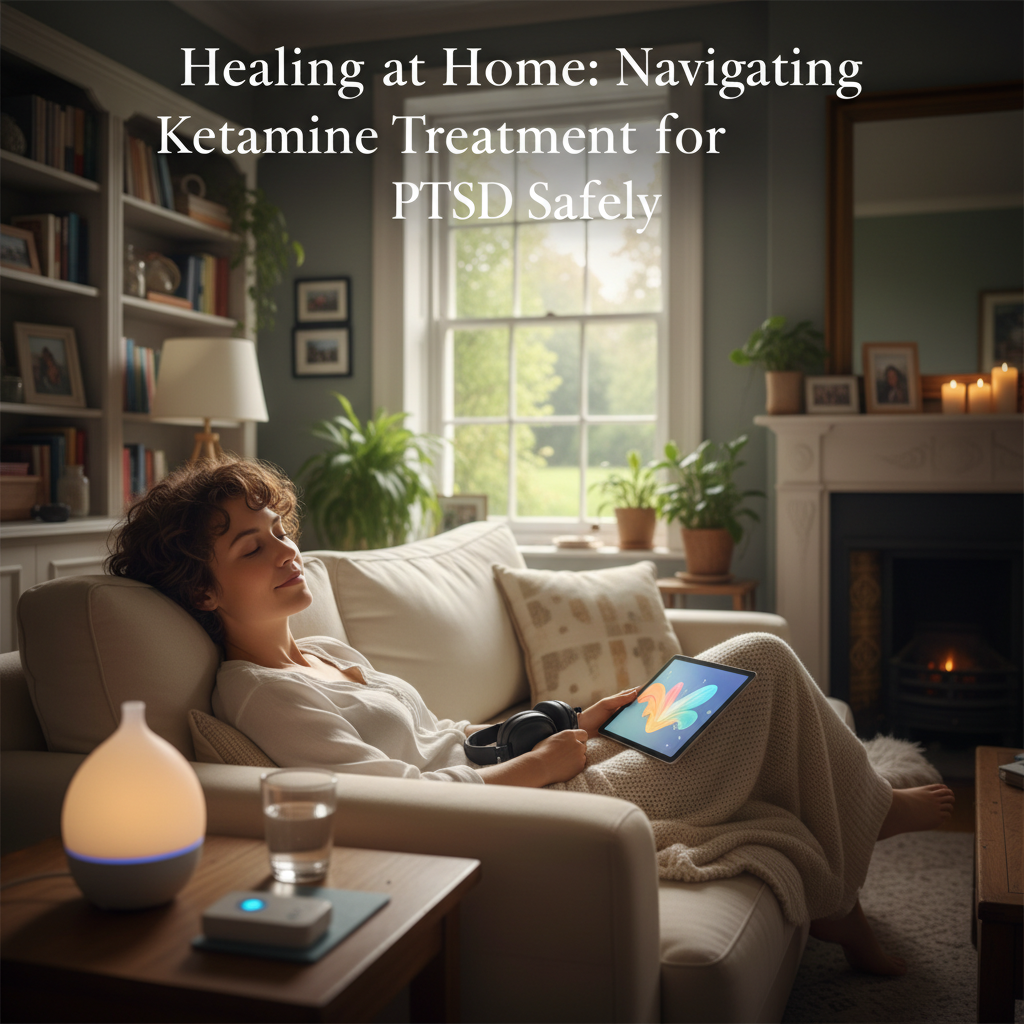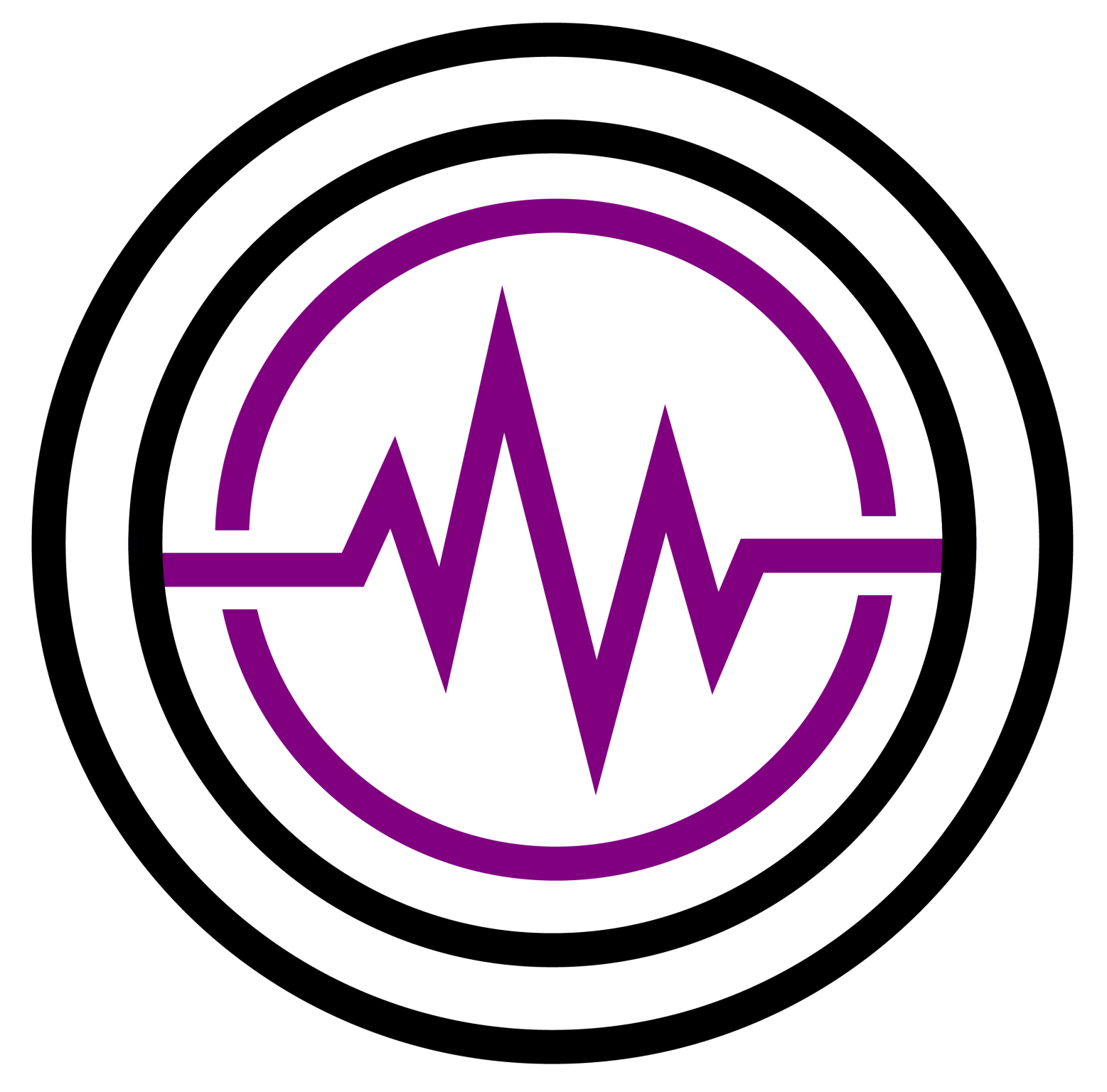Understanding Efficacy, Safety, and Personal Experience Safely
Quick Summary / Key Takeaways
- Medical supervision is paramount for at-home ketamine microdosing, ensuring safety and appropriate dosage guidance throughout your journey.
- Legality varies significantly by region; understanding your local regulations is crucial before considering any at-home ketamine treatment.
- Individual responses to ketamine are highly variable; what works for one person may not be suitable or effective for another, emphasizing personalization.
- Ketamine microdosing offers potential benefits for conditions like depression and anxiety but carries serious risks if unsupervised or misused.
- Integrating ketamine experiences with therapy and mindful practices enhances potential therapeutic outcomes and sustained well-being, fostering deeper healing.
Introduction
The quiet hum of curiosity around psychedelic compounds for mental health has grown into a discernible roar, with ketamine emerging as a particularly intriguing player. For many grappling with conditions like chronic depression or anxiety, the idea of ketamine microdosing at home – a nuanced, less intense approach than full dissociative doses – holds significant appeal. It promises a pathway to potential relief, often with the convenience and privacy of one’s own space. However, it’s crucial to understand that while ‘at home’ implies ease, this isn’t a DIY project. The allure of convenience must be tempered with an unwavering commitment to safety, legality, and rigorous medical oversight. Without proper guidance, what seems like a simple solution can quickly become a perilous one, potentially undermining both your health and therapeutic goals. This comprehensive guide aims to illuminate the landscape of at-home ketamine microdosing. We’ll delve into its mechanisms, potential benefits, and, most importantly, the critical precautions and professional support necessary to navigate this innovative but complex therapeutic frontier responsibly. Our goal is to empower you with knowledge, not just possibilities.
At-Home Ketamine Microdosing vs. Clinic-Based Treatment
| Feature | At-Home Microdosing | Clinic-Based Treatment | Key Consideration |
|---|---|---|---|
| Supervision Level | Remote medical oversight, self-administration | Direct in-person medical team | Safety is critical at home |
| Dosage Control | Self-managed within prescription guidelines | Precisely administered by professionals | Risk of error higher at home |
| Cost Implications | Generally lower due to no facility fees | Higher due to professional services, facility | Access vs. comprehensive care |
| Environment | Comfort of personal home setting | Clinical, controlled, therapeutic space | Supportive environment matters |
Potential Benefits vs. Risks of At-Home Ketamine Microdosing
| Category | Potential Benefit | Potential Risk | Mitigation Strategy |
|---|---|---|---|
| Mental Health | Reduced depression & anxiety symptoms | Psychological distress, dissociation | Strict adherence to dosage, supervision |
| Accessibility | Convenient treatment from home | Lack of immediate medical intervention | Emergency plan, trusted contact |
| Cost | More affordable than clinical sessions | Financial investment without guaranteed results | Thorough research, medical consultation |
| Physical Health | Possible pain relief for certain conditions | Cardiac issues, bladder damage (long-term) | Regular medical monitoring, hydration |
Application Preparation Checklist
- Secure a legitimate prescription from a qualified, licensed medical provider experienced in ketamine therapy.
- Establish a safe, quiet, and supportive environment free from distractions for your microdosing sessions.
- Have a trusted friend or family member available as a ‘sitter’ or on call, especially for initial doses.
- Educate yourself thoroughly on proper dosage, administration methods, and potential immediate effects.
Post-Arrival Checklist
- Reflect on your experience, noting changes in mood, thought patterns, and physical sensations in a journal.
- Engage in integration practices such as meditation, creative expression, or discussions with a therapist.
- Maintain open, honest communication with your prescribing medical professional about your progress and any concerns.
- Adhere to a consistent schedule, but remain flexible to adjust based on your body’s response and medical advice.
Table of Contents
Section 1: Understanding Ketamine Microdosing
- What exactly is ketamine microdosing?
- How does microdosing ketamine impact the brain?
- What conditions might benefit from ketamine microdosing?
- Is there a difference between microdosing and recreational use?
Section 2: Safety, Legality, and Medical Oversight
- Is at-home ketamine microdosing legal?
- What are the critical risks of microdosing ketamine at home?
- Why is medical supervision essential for at-home use?
- What type of doctor can prescribe ketamine for home use?
Section 3: Practical Aspects of At-Home Use
- How is ketamine typically administered for microdosing at home?
- What is a common microdose range for ketamine?
- How frequently should one microdose ketamine?
- What environment is best for at-home ketamine microdosing?
Section 4: Navigating the Experience and Outcomes
- What should I expect during a ketamine microdosing session?
- How can I integrate my ketamine microdosing experiences?
- What if I experience adverse effects or feel overwhelmed?
Frequently Asked Questions
Section 1: Understanding Ketamine Microdosing
FAQ 1: What exactly is ketamine microdosing?
Ketamine microdosing involves taking very small, sub-perceptual doses of ketamine, typically prescribed by a medical professional, to achieve therapeutic effects without the dissociative or hallucinogenic experiences associated with higher doses. The primary goal is to gently influence neural pathways and mood over time, often for conditions like depression or anxiety. These doses are generally too low to cause significant psychoactive effects, allowing individuals to maintain normal daily functioning. It’s an evolving area of treatment focused on neuroplasticity and mood regulation.
FAQ 2: How does microdosing ketamine impact the brain?
Ketamine microdosing primarily impacts the brain by modulating the N-methyl-D-aspartate (NMDA) receptor, a glutamate receptor, which can lead to increased neuroplasticity. This means the brain’s ability to form new connections and pathways is enhanced, potentially helping to ‘rewire’ circuits associated with depression and anxiety. It also promotes the release of brain-derived neurotrophic factor (BDNF), a protein crucial for neuron growth and survival. These effects contribute to mood regulation and cognitive flexibility, offering a novel approach to mental health treatment. The sub-perceptual doses aim to achieve these changes without inducing a full dissociative state.
FAQ 3: What conditions might benefit from ketamine microdosing?
Ketamine microdosing shows promise for various mental health conditions, particularly treatment-resistant depression and chronic anxiety. It’s also being explored for PTSD, OCD, and certain chronic pain conditions like neuropathic pain or fibromyalgia. The mechanism of action, promoting neuroplasticity, suggests broader applications beyond immediate symptom relief. While research is ongoing, initial findings indicate potential as a rapid-acting antidepressant and anxiolytic. Always consult a qualified medical professional to determine if it’s suitable for your specific condition.
FAQ 4: Is there a difference between microdosing and recreational use?
Yes, there is a fundamental difference between microdosing ketamine and recreational use, primarily concerning dosage, intent, and supervision. Microdosing involves very small, sub-perceptual doses prescribed and monitored by a medical professional, aimed at therapeutic outcomes like mood improvement without psychoactive effects. Recreational use typically involves higher doses designed to induce dissociative, hallucinogenic, or euphoric states for non-medical purposes. This often lacks medical oversight, leading to significant health risks and potential for misuse or addiction. The structured, clinical approach of microdosing contrasts sharply with the uncontrolled nature of recreational use.
Section 2: Safety, Legality, and Medical Oversight
FAQ 5: Is at-home ketamine microdosing legal?
The legality of at-home ketamine microdosing varies significantly by jurisdiction and is subject to strict regulations, generally requiring a prescription. In many regions, ketamine is a controlled substance, meaning its use is restricted to medical or research settings. However, licensed medical practitioners can prescribe ketamine for off-label use, often through compounding pharmacies, for at-home administration in some areas. It is crucial to verify local laws and ensure that any at-home treatment is part of a legitimate, medically supervised program to avoid legal repercussions and ensure safety. Self-sourcing ketamine is illegal and dangerous.
FAQ 6: What are the critical risks of microdosing ketamine at home?
Critical risks of unsupervised at-home ketamine microdosing include potential for overdose, psychological distress, and physical side effects like increased blood pressure or nausea. Without professional guidance, individuals may use incorrect dosages, leading to adverse reactions or lack of efficacy. Long-term unsupervised use can also lead to bladder damage (ketamine-induced cystitis) and psychological dependence. The absence of immediate medical intervention in an emergency further elevates the danger. Proper medical oversight mitigates these risks by ensuring safe dosing and monitoring health.
FAQ 7: Why is medical supervision essential for at-home use?
Medical supervision is essential for at-home ketamine microdosing to ensure patient safety, appropriate dosing, and monitoring for adverse effects. A qualified physician can accurately assess your medical history, current health conditions, and potential drug interactions, which are vital for preventing complications. They can tailor the dosage and frequency to your individual needs, adjusting the treatment plan based on your response. Furthermore, medical professionals provide critical support for integration and can intervene quickly if any adverse reactions or psychological distress occur, safeguarding your well-being throughout the process. This oversight minimizes risks and maximizes therapeutic potential.
FAQ 8: What type of doctor can prescribe ketamine for home use?
Ketamine for home use is typically prescribed by a licensed medical doctor, often a psychiatrist, anesthesiologist, or family physician, who has specialized training or experience in ketamine-assisted therapy. These practitioners often work within integrated mental health clinics or telemedicine platforms that specifically offer ketamine treatment programs. It’s crucial that the prescribing doctor conducts a thorough evaluation of your medical and psychological history to determine if you are a suitable candidate. They must also monitor your progress and provide ongoing support, ensuring a safe and effective treatment journey. Always seek out doctors with established credentials in this specialized field.
Section 3: Practical Aspects of At-Home Use
FAQ 9: How is ketamine typically administered for microdosing at home?
For at-home microdosing, ketamine is most commonly administered as a sublingual lozenge (troche or RDT – rapidly dissolving tablet) or nasal spray. Sublingual administration involves placing the lozenge under the tongue or between the cheek and gum, allowing it to dissolve and absorb through the oral mucosa, bypassing the digestive system for faster action. Nasal sprays deliver the medication directly into the nasal passages, where it’s absorbed into the bloodstream. Oral capsules are less common for microdosing due to lower bioavailability. The chosen method is determined by the prescribing doctor based on individual patient needs and convenience.
FAQ 10: What is a common microdose range for ketamine?
A common microdose range for ketamine is highly variable and depends on individual factors like body weight, tolerance, and the specific condition being treated, but generally falls between 10mg to 50mg per dose. Unlike higher therapeutic doses, microdoses are sub-perceptual, meaning they should not induce dissociative or hallucinogenic effects. The precise dosage is determined and carefully adjusted by a prescribing medical professional, often starting at the lower end of the spectrum to assess individual sensitivity and response. Self-dosing without medical guidance is extremely dangerous due to the unpredictable nature of individual reactions. Your doctor will provide specific instructions.
FAQ 11: How frequently should one microdose ketamine?
The frequency of ketamine microdosing is highly individualized and determined by your medical provider, often ranging from once every few days to once or twice a week. It is not an everyday treatment due to potential tolerance buildup and long-term side effects. Some protocols involve an initial ‘loading phase’ with slightly more frequent doses, followed by a maintenance schedule. Your doctor will establish a personalized treatment plan, taking into account your response, the condition being treated, and potential risks. Consistent communication with your medical team is vital for adjusting the schedule as needed. Adherence to this prescribed frequency is critical for both safety and efficacy.
FAQ 12: What environment is best for at-home ketamine microdosing?
The best environment for at-home ketamine microdosing is a quiet, comfortable, and safe space where you can relax without interruptions. Choose a familiar room where you feel secure, ensuring a calm atmosphere that minimizes external stimuli. Dim lighting, soft music, or noise-canceling headphones can enhance the experience. It’s crucial to have a trusted person nearby or on call, especially during initial sessions, in case you need assistance. Avoid driving or operating heavy machinery during and immediately after your session. This supportive setting helps foster a positive therapeutic experience and reduces potential anxiety.
Section 4: Navigating the Experience and Outcomes
FAQ 13: What should I expect during a ketamine microdosing session?
During a ketamine microdosing session, you should expect subtle rather than overwhelming effects, as the doses are sub-perceptual. You might feel a gentle shift in mood, a mild sense of calm, or a slight alteration in perception without experiencing full dissociation. Some individuals report a mild body buzz or a feeling of lightness. Any noticeable psychoactive effects beyond this suggest the dose might be too high and should be immediately reported to your doctor. The goal is to remain functional and present, allowing for daily activities to continue uninterrupted while therapeutic processes unfold. Your medical provider will guide you on what specific sensations to monitor.
FAQ 14: How can I integrate my ketamine microdosing experiences?
Integrating ketamine microdosing experiences involves intentionally processing and applying any insights or shifts gained during treatment into your daily life. This process often includes journaling about your thoughts and feelings, engaging in therapy (especially integration-focused therapy), and practicing mindfulness or meditation. Connecting with a therapist can provide a structured space to discuss your experiences and develop actionable strategies for lasting change. It’s about translating the neuroplastic changes into tangible improvements in behavior, thought patterns, and emotional well-being. Regular self-reflection and professional guidance are key to maximizing therapeutic outcomes. Click here for more resources.
FAQ 15: What if I experience adverse effects or feel overwhelmed?
If you experience adverse effects or feel overwhelmed during a ketamine microdosing session, it is crucial to immediately contact your prescribing medical professional or a designated emergency contact. Symptoms like severe anxiety, heightened dissociation, extreme nausea, or unexpected physical reactions warrant immediate attention. Stop the session, move to a safe and comfortable position, and breathe deeply. Having a pre-established safety plan, including contact numbers and steps to take, is essential. Never hesitate to seek medical help if you feel your safety or well-being is compromised. Your doctor will guide you on managing discomfort or adjusting your treatment plan. Click here for immediate assistance resources.

